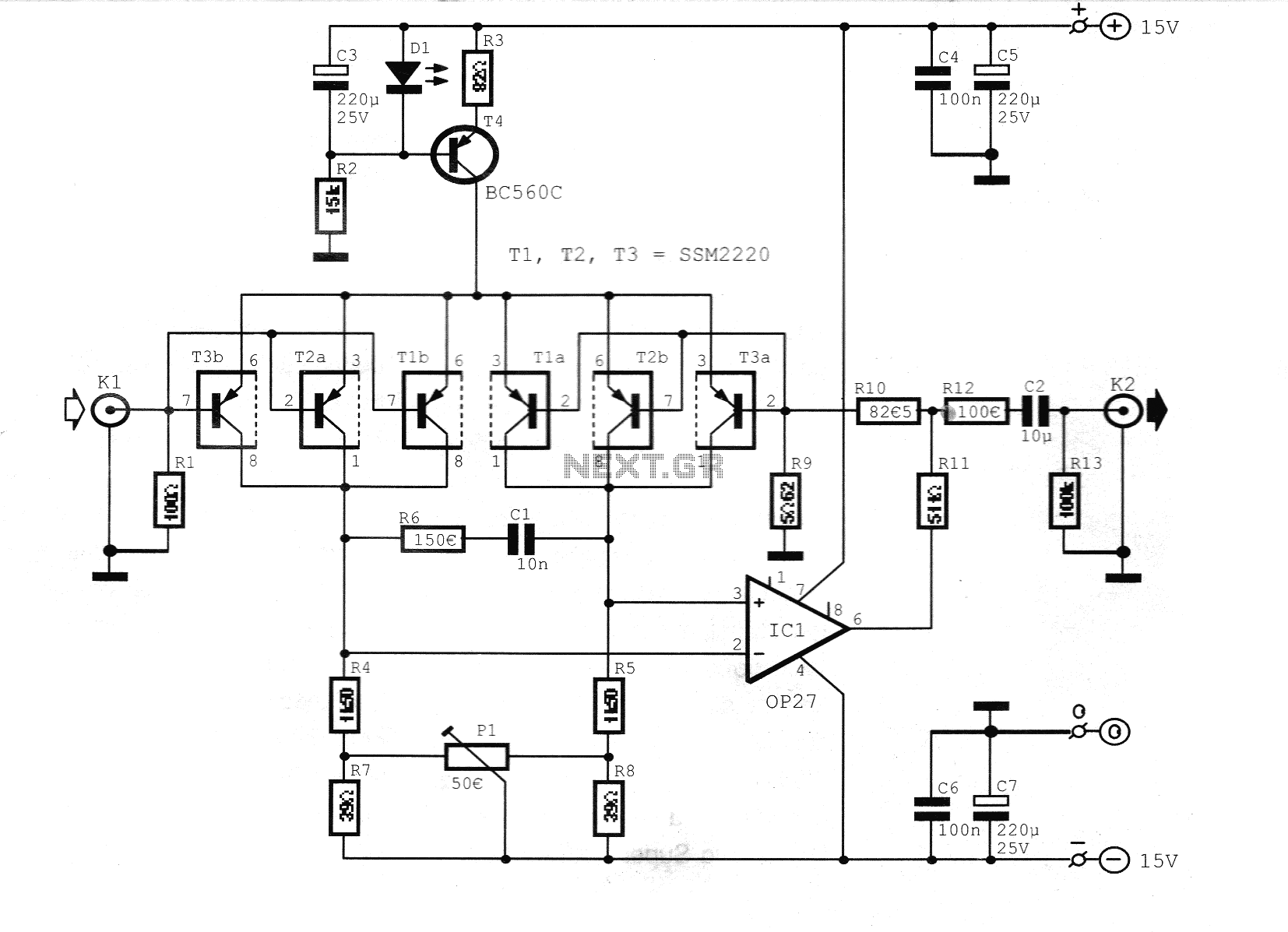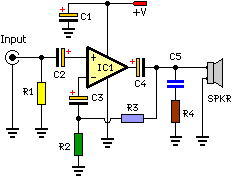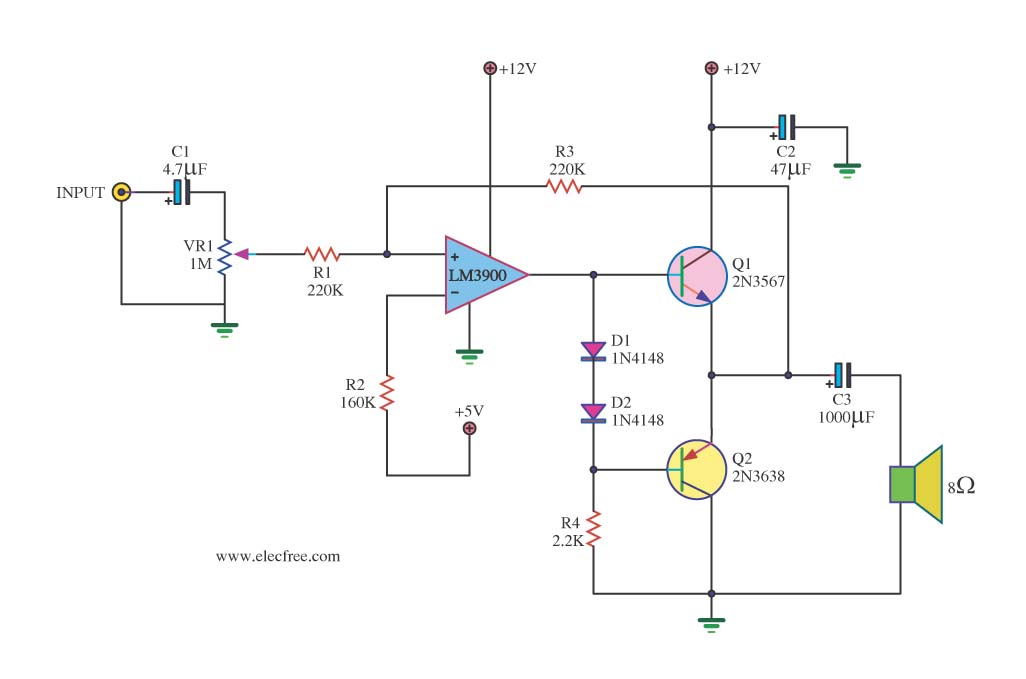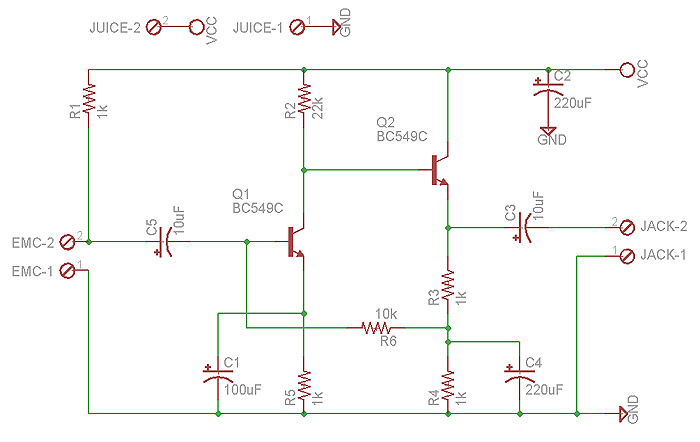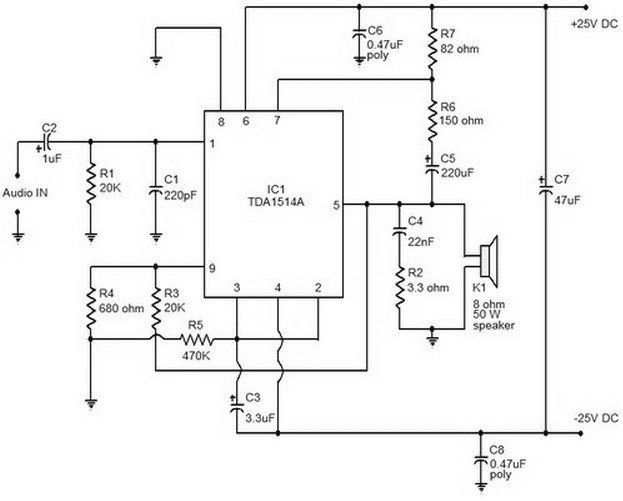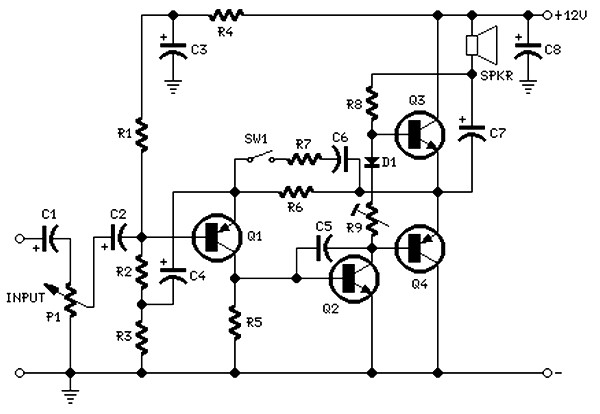
Low-noise broadband amplifier
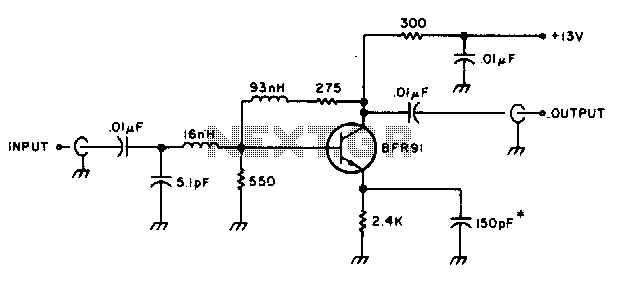
The amplifier delivers a gain of 10 dB across a frequency range of 10-600 MHz and features a 1-to-1 impedance match at 50 ohms. The BFR91 transistor exhibits a noise figure of 1 dB at 500 MHz. The circuit operates with a supply voltage of 13 Vdc, drawing approximately 13 mA. It is important to keep the leads of the 150 pF emitter bypass capacitor as short as possible. The 16 nH coil is constructed with 2 turns of #26 enamel wire wound around the shank of a #40 drill. Additionally, the 93 nH inductor is made with 10 turns of the same wire material.
The amplifier circuit is designed to provide an effective gain of 10 dB, making it suitable for applications requiring signal amplification within the specified frequency range of 10 to 600 MHz. The 50-ohm matching ensures optimal power transfer and minimizes signal reflections, which is critical in RF applications. The choice of the BFR91 transistor is significant due to its low noise figure of 1 dB at 500 MHz, which enhances the overall performance of the amplifier by reducing the noise contribution to the amplified signal.
Power supply requirements are specified at 13 Vdc with a current draw of approximately 13 mA, which indicates a low power consumption typical for RF amplifiers. The design emphasizes the importance of minimizing lead lengths on the 150 pF emitter bypass capacitor, as longer leads can introduce unwanted inductance and affect the circuit's performance, particularly at high frequencies.
The use of a 16 nH coil, constructed from 2 turns of #26 enamel wire, is tailored for the specific inductance value required in the circuit. This coil is wound around a #40 drill bit, which serves as a form for maintaining consistent dimensions during construction. Additionally, the 93 nH inductor, made with 10 turns of the same wire, provides further inductive reactance necessary for tuning or filtering within the circuit. Both inductors are crucial for the stability and frequency response of the amplifier, ensuring that the desired operational characteristics are achieved. Proper construction techniques and component selection are essential for achieving optimal performance in high-frequency applications.The amplifier provides 10 dB of gain from 10-600 MHz and has a 1-to-l match at 50 ohms. The BFR91 has a 1 dB noise figures at 500 MHz, The circuit requires 13 Vdc at about 13 mA. Keep the leads on the 150 pF emitter bypass capacitor as short as possible. The 16 nH coil is 2 turns of #26 enamel wire on the shank of a #40 drill The 93 nH inductor is 10 turns of the same material. 🔗 External reference
The amplifier circuit is designed to provide an effective gain of 10 dB, making it suitable for applications requiring signal amplification within the specified frequency range of 10 to 600 MHz. The 50-ohm matching ensures optimal power transfer and minimizes signal reflections, which is critical in RF applications. The choice of the BFR91 transistor is significant due to its low noise figure of 1 dB at 500 MHz, which enhances the overall performance of the amplifier by reducing the noise contribution to the amplified signal.
Power supply requirements are specified at 13 Vdc with a current draw of approximately 13 mA, which indicates a low power consumption typical for RF amplifiers. The design emphasizes the importance of minimizing lead lengths on the 150 pF emitter bypass capacitor, as longer leads can introduce unwanted inductance and affect the circuit's performance, particularly at high frequencies.
The use of a 16 nH coil, constructed from 2 turns of #26 enamel wire, is tailored for the specific inductance value required in the circuit. This coil is wound around a #40 drill bit, which serves as a form for maintaining consistent dimensions during construction. Additionally, the 93 nH inductor, made with 10 turns of the same wire, provides further inductive reactance necessary for tuning or filtering within the circuit. Both inductors are crucial for the stability and frequency response of the amplifier, ensuring that the desired operational characteristics are achieved. Proper construction techniques and component selection are essential for achieving optimal performance in high-frequency applications.The amplifier provides 10 dB of gain from 10-600 MHz and has a 1-to-l match at 50 ohms. The BFR91 has a 1 dB noise figures at 500 MHz, The circuit requires 13 Vdc at about 13 mA. Keep the leads on the 150 pF emitter bypass capacitor as short as possible. The 16 nH coil is 2 turns of #26 enamel wire on the shank of a #40 drill The 93 nH inductor is 10 turns of the same material. 🔗 External reference
